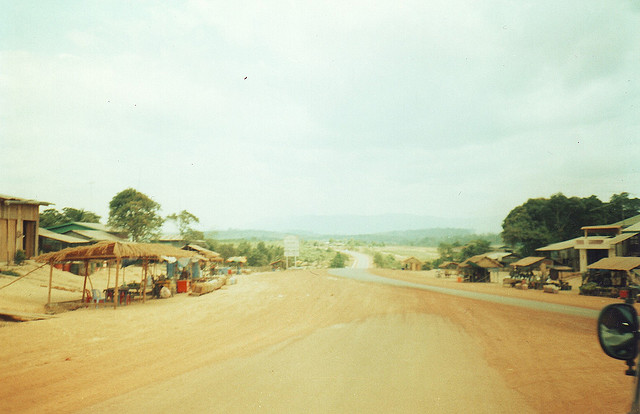I WATCHED THE BOY MOVE. Thin, dark, in tattered pants and flip-flops, he walked slowly along the river’s steep embankment. He carried a wooden spear, his eyes hunting the small black birds that flitted from crevices in the cement.
It was dusk on my first day in Phnom Penh, exercise hour along the gleaming new riverside. Men in running shoes swung their arms in circles; couples played badminton; elderly women in sun visors lifted their arms in unison, mimicking the aerobic instructor’s movements. Behind them the orange sky struck the Royal Palace into silhouette. Its decorative roofing rose from the spires like snakes, or the twist of incense smoke. Around me, people smiled.
